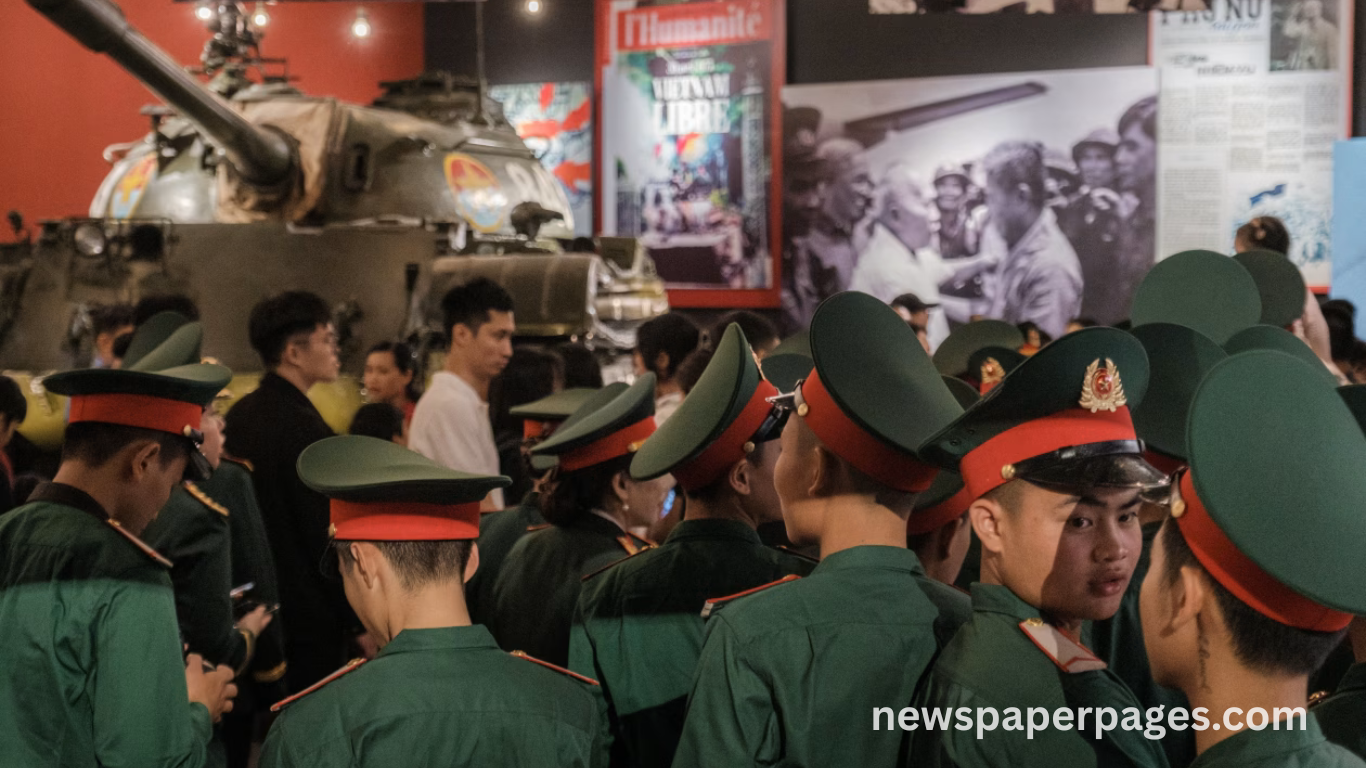Tucked in the heart of Ho Chi Minh City, Vietnam’s newest war museum is fast becoming one of the most controversial yet captivating destinations for global travelers. While traditional exhibits showcase relics from the Vietnam War—known locally as the American War—it’s not the rusted tanks or haunting photographs that are drawing the most attention. Instead, it’s the uncanny spotlight placed on visitors who simply look American.
This odd, immersive dynamic transforms tourists from passive viewers into central figures in the narrative. Museum staff, signage, and even local guides have cultivated an atmosphere where American-looking individuals are subtly, and sometimes overtly, positioned as both artifacts and interlocutors in a space dedicated to remembrance, resistance, and reckoning. For better or worse, the museum’s unorthodox approach to engagement is stirring global conversation and redefining how war histories are remembered.
A New Kind of Exhibit: You
Unlike traditional war museums, Vietnam’s new war museum subtly encourages interaction with “live exhibits”—specifically, tourists who resemble Americans. These individuals often find themselves the focus of curious stares, unexpected interviews, or staff-guided discussions. This strategy is not overtly hostile but undeniably provocative, prompting both introspection and unease. It’s a form of participatory history that merges past conflict with present identity, challenging visitors to confront the lingering global impact of the Vietnam War.
Historical Context Behind the Experience
To understand the museum’s approach, one must delve into the historical trauma embedded in Vietnam’s collective memory. For decades, the American War shaped the socio-political landscape of the country. Civilians, veterans, and historians alike carry memories of destruction, resistance, and survival. The museum seeks to preserve these memories not just through artifacts but through a living dialogue. By centering American visitors, curators revive painful questions about accountability, imperialism, and healing.
The Role of “Looking American” in Vietnamese Society
In Vietnam, “looking American” often transcends nationality. It includes individuals with Western features, accents, or fashion. The local perception bundles these traits into a symbolic representation of American identity. Inside the museum, this perception takes on new weight. While some American visitors feel singled out or tokenized, others report significant interactions with locals seeking connection or closure. The experience oscillates between an awkward social experiment and a profound emotional journey.
A Tourist Experience Like No Other
Tourists who “fit the profile” often describe their museum visit as unlike anything they’ve experienced elsewhere. Some recount being asked questions about their stance on the war or their family’s military history. Others find themselves silently observed by Vietnamese guests who remember the war’s devastation. Social media is flooded with posts from surprised visitors who realized mid-tour that they had become part of the exhibit. These unexpected roles often provoke deep reflection and lengthy online discussion.
Public Reaction and Ethical Concerns
The museum’s method has garnered polarized reactions. Critics argue that using tourists as unwitting “exhibits” toes an ethical line, potentially exploiting or humiliating visitors. Supporters counter that it creates a space for truth-telling and emotional honesty rarely seen in Western museums. Debate also surrounds the impact on Vietnamese youth, many of whom visit the museum on school trips. Are they learning about reconciliation or being fed a curated enemy narrative? This tension underpins the entire attraction.
How the Museum Shapes Historical Dialogue
One of the most impactful aspects of this approach is its power to force conversations about memory, identity, and history. For Vietnamese citizens, particularly the younger generation, these interactions provide a rare chance to personalize a war that ended long before they were born. For Americans, especially those unaware of the war’s global resonance, the experience often challenges their understanding of their nation’s role in international conflicts. This cross-cultural exchange is the museum’s most powerful tool.
Read More : First Celebrities Wanted Us To Read. Now They Want Us to Run.
The Museum’s Broader Cultural Strategy
Vietnam’s war museums have long walked a tightrope between historical accuracy and political messaging. The new war museum represents a pivot toward emotional engagement, blending storytelling, performance, and lived experience. It’s a strategy that reflects broader trends in global museology, where immersive environments aim to elicit empathy and participation. Here, the idea of turning visitors into participants pushes those trends to a provocative extreme—and whether you support it or not, it’s working.
What Visitors Should Know Before Attending
Before entering the museum, it’s helpful for American or Western-looking tourists to be aware of the potential spotlight. While there’s no formal procedure that identifies or interacts with such guests, the dynamic emerges organically. Tourists should prepare for the possibility of conversation, reflection, and even confrontation. Dressing modestly, showing cultural sensitivity, and having a basic knowledge of Vietnam’s war history can go a long way in fostering mutual respect during the visit.
Frequently Asked Questions
Why is the museum focusing on people who “look American”?
The museum uses this approach to encourage dialogue between the past and present, spotlighting those perceived as symbolic of the war’s former aggressors.
Is the experience hostile or confrontational for American visitors?
Generally, no. Most interactions are curious or emotional, not aggressive. However, some visitors report feeling uncomfortable while under the spotlight.
Can non-Americans be mistaken for Americans in this context?
Yes. Western tourists, especially those with certain accents or dress styles, are often grouped under the umbrella of “American.”
Is this museum different from other war museums in Vietnam?
Yes. While many museums in Vietnam focus on historical documentation, this one emphasizes interactive and emotional engagement, especially with live audiences.
Are children or school groups exposed to this approach?
Yes. Vietnamese students often visit the museum and may observe or even participate in discussions involving American visitors.
How should American tourists respond if approached?
Respectfully and thoughtfully. Most Vietnamese people are seeking understanding, not confrontation. A humble and open attitude goes a long way.
Is photography allowed in the museum?
Photography is allowed in most areas, but it’s advised to ask permission before taking photos of individuals or sensitive displays.
Are there guided tours in English?
Yes, the museum offers English-language tours that provide historical context and may include group discussions that involve international visitors.
Conclusion
Vietnam’s new war museum is not just a place to see history—it’s a place to live through it. By putting American-looking visitors at the center of the narrative, the museum forces a decisive, sometimes uncomfortable reckoning with the past. Whether you find it controversial or compelling, the experience is undeniably unforgettable. For those willing to reflect deeply on history, identity, and conflict, this museum delivers a haunting but necessary experience.

